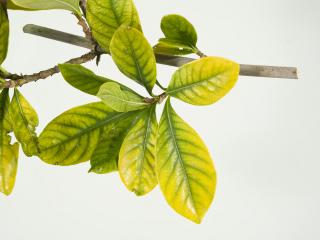Pests, diseases and soil pH
Strong and healthy plants which get sufficient water, nutrition and sunlight, will build up a natural resistance against pests and diseases. It therefore pays to keep the soil pH around neutral to avoid certain nutrient deficiencies, which will weaken the plants and make them more vulnerable to pest and disease attacks.
There are a few diseases which are affected by soil pH. Clubroot, a disease of crucifers, can be controlled by increasing the soil pH, while common scab, a disease of potatoes, is more likely to cause problems in alkaline soils.
When and how to test soil pH
Test your pH in autumn when the soil is relatively dry and is free of excessive organic material. This will give you some time to do adjustments, if needed.
When sampling, follow these guidelines:
- Do not mix different soil types, and sample into clean containers.
- Do not sample after heavy rain or after watering.
- If you have applied fertiliser, wait three to four weeks for the soil to adjust.
- Take the soil from the top 20cm with a trowel, spade or auger and avoid weeds and plant roots in the sample.
- Select at least five random spots in the area to be tested, and mix the soil to get an average reading. Then take about a cup-full as a sub sample.
Inexpensive soil pH test kits are available from many garden centres and give home gardeners an approximate reading.
If you want more accurate results, take a sample to be tested to a soil laboratory like the Chemistry Centre WA or check for other services in the Yellow Pages directory.
Laboratories may report a pH reading in water (H2O) or in 1:5 calcium chloride (CaCl2 ). Readings in calcium chloride are considered a better indicator of acidity.
If flowering, hydrangeas (Hydrangea macrophylla) are good indicators of soil pH. A soil pH of 6 or below will produce blue flowers while a soil pH of 6.8 or higher will produce pink flowers.

